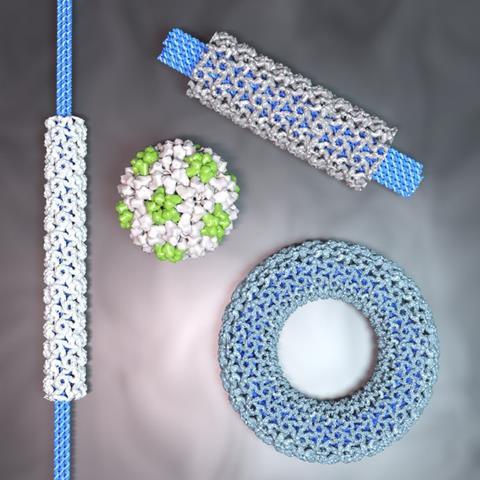
DNA origami can be used to create basic shapes that can then be covered with viral coat proteins. According to Dutch, Finnish and Australian researchers writing in Nature Nanotechnology, the resulting structures can be used, among other things, to transport small molecules.
Capsids of viruses have been used for some time in vaccines, where they act as virus-like particles. But they are also widely used in nanobioengineering, especially the capsids of the CCMV virus. Making spherical structures from these capsids is now a piece of cake, but the Finnish-Australian-Dutch team has now found a way to make alternative structures from these capsids using DNA origami.
The researchers isolated the capsomeres (capsid proteins) of the CCMV capsid and linked them to the DNA origami structures. This is done through electrostatic and protein-protein interactions. This is because the N-terminus of a capsomer has positively charged amino acids that interact with the negatively charged phosphate backbone of the DNA. Once an initial layer has formed, this positive tail can also bind to the negatively charged parts of the capsomers, forming a double protein layer. They confirmed this using cryo-EM (see also related articles below).
The researchers also showed that a capsid layer can be formed around RNA origami, not only with CCMV proteins, but also with capsomers from other viruses such as simian virus and a polyomavirus.
An additional advantage of the capsid layer on DNA is that it provides protection against DNase. This opens up many possibilities because DNA origami itself is very easy to modify and functionalise. The researchers demonstrate this by attaching gold nanoparticles to it. You can attach a number of other molecules to these gold nanoparticles, which are released at a certain moment, for example when you change the pH, causing the DNA origami structure to open up. With the capsid layer – which you can remove with a dose of heparin – your DNA structure, including the baggage, remains intact until you get the right signal.

Seitz, I. et al. (2023) Nat. Nanotechnol. DOI: 10.1038/s41565-023-01443-x












Nog geen opmerkingen